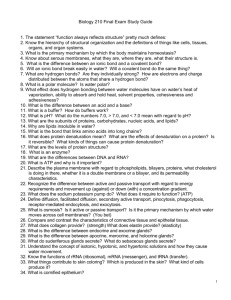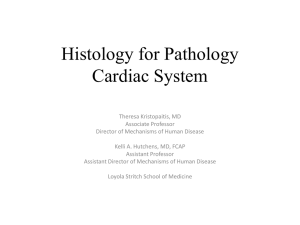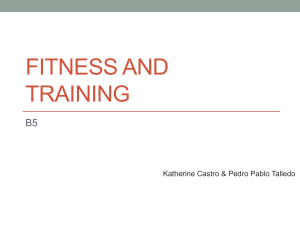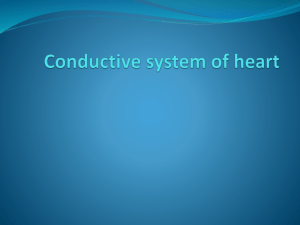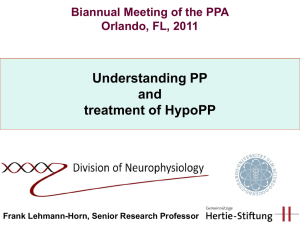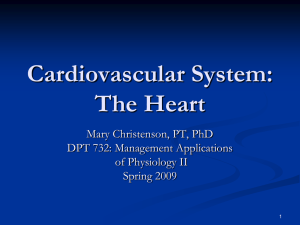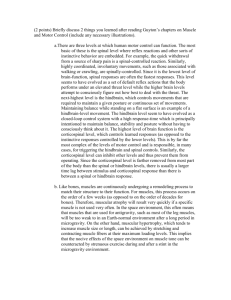File
advertisement
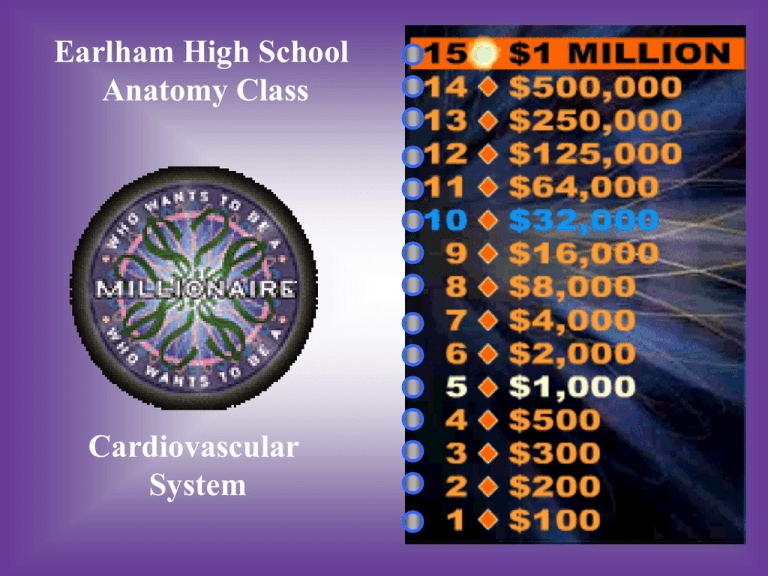
Earlham High School Anatomy Class Cardiovascular System #1 The main organ of the cardiovascular system is the: A: Lungs B: Heart C: Liver D: Your mom! B: Heart #2 Which of the following structures consists of self-exciting tissue? A: chordae tendineae B: papillary muscles C: sinoatrial node D: atrial syncytium C: sinoatrial node #3 Platelets are best defined as A: Giant, multinucleated B: Cytoplasmic fragments of cells D: Lymphoid cells cells C: Immature leukocytes B: cytoplasmic fragments of cells #4 The tissue that forms a loose-fitting sac Around the heart is the A: pericardium B: epicardium C: endocardium D: exocardium A: pericardium #5 Nonprotein nitrogenous substances include A: Amino acids B: Urea C: Uric acid D: All of the above D: All of the above #6 Of the following, the one that is not a type of plasma protein: A: Heparins B: Fibrinogens C: Albumins D: Globulins A: Heparins #7 Of the following, the one that is not a factor that influences blood pressure: A: Blood volume B: Viscosity C: Digestive rate D: Stroke volume C: Digestive rate #8 A normal white blood cell count (WBCC) is between A: 500-1000/mm3 of blood B: 5000-10,000/mm3 of blood C: 50,000-100,000/mm3 of D: 15,000-25,000/mm3 of blood blood B: 500010,000/mm3 of blood #9 The basic event in the formation of a blood clot is the change of A: Fibrinogen to fibrin B: Fibrin to fibrinogen C: Thrombin to D: Vitamin K to prothrombin prothrombin A: Fibrinogen to fibrin #10 The most important action of plasma albumin is A: Acting as antibodies of B: Helping to control bleeding D: Helping to maintain blood osmotic pressure immunity C: Serving as energy sources D: Helping to maintain blood osmotic pressure #11 When the ventricular walls contract, the Bicuspid valve opens A: and the tricuspid valve B: closes C: Bicuspid and tricuspid valves close D: Tricuspid valve opens and the bicuspid valve closes Bicuspid and tricuspid valves open C: Bicuspid and tricuspid valves close #12 The most active phagocytic cells among the leukocytes are A: Basophils and B: Neutrophils and monocytes D: Monocytes and lymphocytes eosinophils C: Lymphocytes and neutrophils B: Neutrophils and monocytes #13 The density of capillaries within a tissue varies directly with the tissue’s A: Thickness B: Fluid content C: Type of matrix D: Rate of metabolism D: Rate of metabolism #14 In an ECG pattern, the T wave is caused by A: Polarization of atrial muscle fibers C: Depolarization of atrial muscle fibers B: Polarization of ventricular muscle fibers Depolarization of D: ventricular muscle fibers B: Polarization of ventricular muscle fibers #15 In an ECG pattern, the P wave is caused by A: Polarization of atrial B: Polarization of ventricular muscle fibers D: Depolarization of ventricular muscle fibers muscle fibers C: Depolarization of atrial muscle fibers C: Depolarization of atrial muscle fibers Great Job!!!! Thank you for playing!
